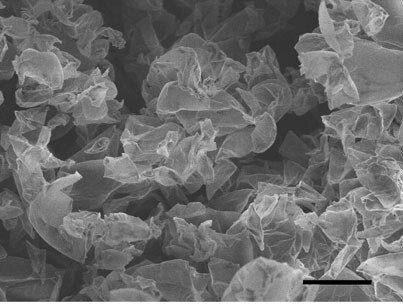Graphene is fast becoming the platform on which new technology will be built upon. From new processors to optical data transfer there seems to be nothing graphene can’t do. Keeping with that mentality researchers at Nanotek Instruments are applying graphene’s electrical properties to supercapacitors. To do this the researchers prepared ‘curved’ graphene sheets that won’t restack face-to-face. The new supercapacitor uses the graphene mixed with Super P, a version of acetylene black, which make up the electrodes and eventually incorporated into a coin-sized capacitor. Bor Z. Jang, Ph.D., professor of materials engineering and former dean of the College of Engineering and Computer Science at Wright State University says that, “Our goal is to make a supercapacitor that stores as much energy as the best lithium-ion batteries (for the same weight) but which can still be recharged in less than two minutes, despite the theoretically high specific surface area of single-layer graphene (which can reach up to 2.675 m2/g), a supercapacitance of 550 F/g has not been reached in a real device because the graphene sheets tend to re-stack together. We are trying to overcome this problem by developing a strategy that prevents the graphene sheets from sticking to each other face-to-face. This can be achieved if curved graphene sheets are used instead of flat ones."
Let's compare this new supercap to a typical battery in terms of Joules, energy density.
For a capacitor Joules = 1/2(C)(V^2) And n this case I will assume 4V on the cap.
So, Joules = 1/2(550)(4^2) = 4400 Joules per gram
Now, with my Sprint Evo 4G cell phone, I have a battery that claims 3.7VDC @ 1500mAH.
We have 1.5A-hr. Converting to watt-hours = V(A-hr) = 3.7V(1.5A-hr) = 5.55 watt-hr
Converting to watt-sec = (watt-hr)(3600sec/hr) = (5.55 watt-hr)(3600sec/hr) = 19980 watt-sec
A watt-sec is equal to one joule. So the battery holds 19980 Joules.
With only a 4.5 gram graphene capacitor the Evo 4G's battery could easily be replaced. And not only that, this capacitor could probably be charged in a couple of minutes. However, I do not know the time constant of the capacitor, an important factor in calculating the charge time of a cap. I can't wait for this capacitor to reach the market. Everything will change.
Cabe

